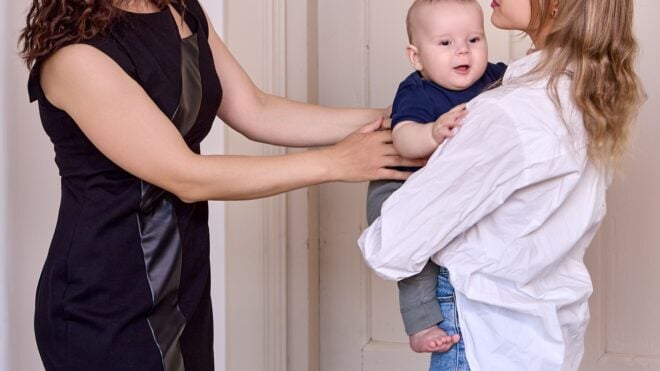Swans

Swans choose their mate at a young age, when they are only a couple of years old. There is a complex courtship display when swans face each other, and dip and turn their heads or spread and raise their wings. They also "kiss bills," which forms the famous heart shape with their necks. Many swans are monogamous and mate for life, but some pairs are not. If the swan couple has trouble reproducing, they "divorce" and find new partners.
Giraffes

When a male giraffe is ready to mate, he approaches a female, nudges her rump, stimulating her to urinate, and then smells and tastes the urine. The odor and taste of her pee tells the male whether or not she is in heat. If she is, the male then follows her and guards her against other males until she allows him to mate with her. He fights potential male threats by "necking," which can be either the pressing of necks together until one gives in, or violently swinging the heads and necks at each other until one giraffe concedes defeat.
Blue-Footed Boobies

These famous blue-footed birds do a dance when it's time to mate. The male blue-footed booby shows off his webbed feet to a potential female partner. The more pigmented his feet are, the better his chances are at mating with her. The vivid color indicates his ability to acquire food—so the brighter, the better. He displays his feet in an elaborate high-stepping walk. His dance also includes a wing display and an upward beak tilt, which the female hopefully reciprocates. Once she chooses a mate, the two form a monogamous pair and reproduce.
Betta Fish

When a male betta fish senses a female and is ready to mate, he builds a bubble nest. He gulps down surface oxygen and releases it underwater as bubbles. Once the bubble nest is ready, he relentlessly pursues the female. If she resists going into his bubble nest, the male violently forces her into it. He chases and bites her, and she may be visibly injured by the time she enters the bubble nest. After mating and producing her eggs, the male chases the female out of the bubble nest if she has not already left on her own. The male stays with the eggs and guards them until they hatch.
Sloths

The female sloth lets it be known that she is ready to breed by literally screaming for a mate. When in heat, she screams to attract males to her. The male follows the sounds of her yells and sometimes fights with other males to win the female's attention. Neither the male nor the female are monogamous in their mating. Both take multiple partners, with the female giving birth to one child at a time.
Peacocks

Peacocks flaunt their feathers to gain attention from peahens. As part of their courtship ritual, peacocks show off their plumage and fan out their feathers. Every peacock's tail has its own distinct color patterns and "eyespots." The female studies the number of eyespots and the size of the peacock's tail when making her decision. Bigger isn't always better, though. Some females are turned off by overly large tails with too many flashy eyespots. Particularly attractive males have a "harem" of several peahens, all of which are enticed by his spectacular tail.
Frogs

Female frogs choose a mate in many different ways. They can be attracted to his appearance, nest-building abilities or just his close proximity. However, the main method is the call of the male frog. When he is trying to attract a female, the male of many different frog species "sings" and sends out a mating call. For some species, if another male responds to his call, the two wrestle with each other. The victor, having proven himself to be the stronger contender, is then able to mate with the female.
Penguins

The male of some penguin species, like the gentoo and adelie penguins, presents the female with a "perfect pebble" as a part of their courtship. He spends hours searching to find the right one and fights other males for it. He then presents it to his chosen female, and she adds it to the nest if she accepts the gift. This "pebble proposal" finds penguins their lifetime mates, as many species are monogamous. However, female penguins choose another male if their partner doesn't appear during mating season.
Bowerbirds

Male bowerbirds show off their decorative skills when trying to woo a female. They build elaborate bowers, or nests, with twigs and then decorate them with brightly colored or shiny objects. The decorated bower on the ground hopefully lures potential female partners to it. Once a female enters the bower, the male woos her further with a song and dance routine, darting in and out of the bower as she watches. He repeats this entire process multiple times during mating season. After mating, the female leaves and builds her own nest off the ground, caring for the chicks on her own.
Spiders

Male spiders try several ways to entice a female to mate with them. Many males of different spider species cautiously approach a female's web and strike it, sending vibrations to signal their interest to the female. Some types, like the brown recluse spider, will then start a complicated and bizarre dance, waving the legs and jumping to gain the female's attention. The male black widow spider similarly starts by sending vibrations to the female on her web but then immediately begins approaching her while severing strands of the web to block off paths of escape. Many male species, including the black widow spider and the happy face spider, risk the danger of being eaten by the female if she decides that she doesn't want to mate.




